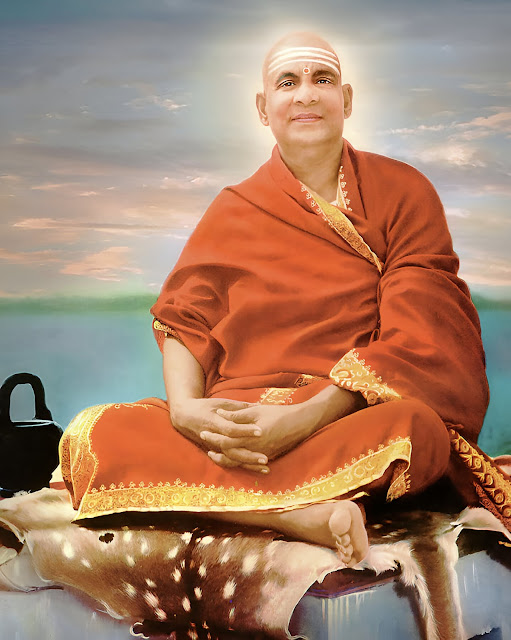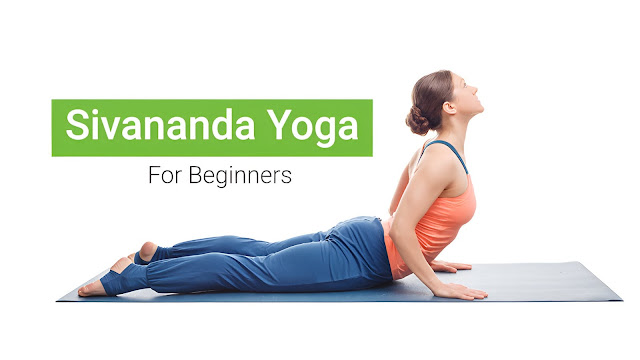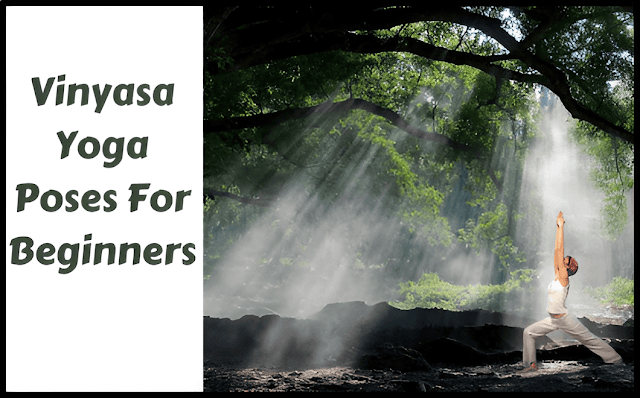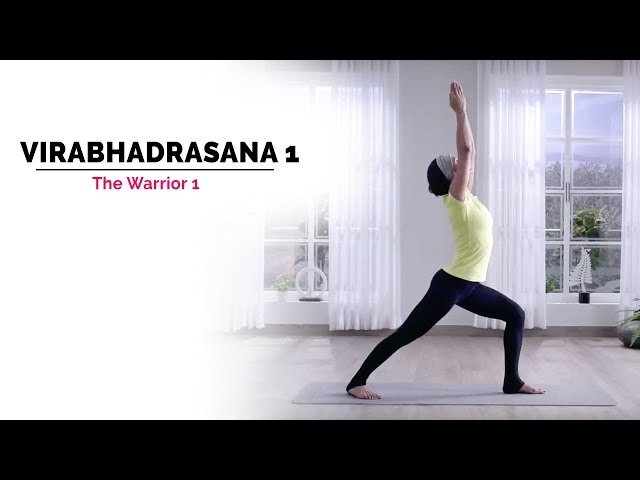The Benefits of Practicing Sivananda Yoga Regularly
Namaste🙏,
Welcome to the transformative world of Sivananda Yoga, where ancient wisdom meets modern-day wellness practices. Sivananda Yoga, with its holistic approach to health and spirituality, offers a profound journey of self-discovery and self-realization. Rooted in the teachings of Swami Sivananda and brought to the West by his disciple Swami Vishnudevananda, Sivananda Yoga provides a comprehensive system for achieving physical fitness, mental clarity, and spiritual growth. At the heart of Sivananda Yoga lies a sequence of 12 basic asanas, designed to harmonize the body, mind, and spirit. Whether you're a seasoned yogi or a beginner taking your first steps on the mat, Sivananda Yoga offers a path to balance, vitality, and inner peace. Let's explore the transformative power of Sivananda Yoga together.
But, before proceeding, let's look at our previous posts. Our previous post describes the essential yoga types, "Hatha Yoga" "Ashtanga Yoga", "Kundalini Yoga", "Aerial Yoga", "Iyengar Yoga", "Power Yoga", "Bikram Yoga", "Vinyasa Yoga" and "Prenatal Yoga". Now from this post, we are continuing our journey to learn about the next essential yoga pose called, "Sivananda Yoga". So without wasting the time, let's roll...✌
 |
| Swami Sivananda |
Introduction
Welcome to the serene and transformative world of Sivananda Yoga, a practice that stands out like a tranquil oasis in the bustling city of modern yoga traditions. If you're embarking on your yoga journey or seeking a path that nurtures your body, mind, and spirit in equal measure, you've arrived at the right place. Sivananda Yoga, with its comprehensive approach to wellness, invites you into a practice that goes beyond mere physical exercise to touch the essence of your being.
Sivananda Yoga is not just another style; it's a holistic way of living. Born from the wisdom of Swami Sivananda and brought to the world by his disciple Swami Vishnudevananda, it's a system designed to promote physical, mental, and spiritual health. This practice distinguishes itself through its simplicity and depth, embodying a lifestyle that extends off the mat and into the world. With its roots deeply embedded in the traditional yoga philosophy, Sivananda Yoga offers a refuge from the chaos of everyday life, guiding practitioners toward inner peace and self-realization.
For beginners, understanding the foundational principles of Sivananda Yoga is like unlocking a treasure chest of wellbeing. It equips you with the knowledge and tools to embark on a journey of self-discovery and transformation. Whether you're drawn to the physical postures, the meditative practices, or the ethical guidelines, there's something in Sivananda Yoga that speaks to the heart of every seeker.
But don't just take our word for it. Dive into the experience yourself. As you read through this guide, we encourage you to listen to your inner voice and observe how the principles of Sivananda Yoga resonate with your personal path. Share your thoughts, questions, and insights in the comments section below. Are you curious about how Sivananda Yoga differs from other styles? Wondering how to incorporate its teachings into your daily routine? Let's start a conversation and explore the enriching world of Sivananda Yoga together. Your journey to a balanced and harmonious life starts here.
What is Sivananda Yoga?
Nestled within the rich tapestry of yoga practices, Sivananda Yoga emerges as a beacon of holistic health and spiritual growth. This unique form of yoga, known for its gentle yet profound approach, owes its origins and global recognition to two remarkable individuals: Swami Sivananda and his disciple, Swami Vishnudevananda.
History and Origins
Swami Sivananda, a medical doctor turned yogic sage, laid the foundation of Sivananda Yoga in the early 20th century. His teachings emphasized the healing power of yoga and its potential to foster universal peace and understanding. In his ashram nestled in the holy town of Rishikesh, India, Swami Sivananda's wisdom attracted seekers from around the globe.
One such seeker was Swami Vishnudevananda, who, under the tutelage of Swami Sivananda, embraced the profound depths of yoga. Swami Vishnudevananda was later inspired to bring these teachings to the Western world, establishing the first Sivananda Yoga Vedanta Centre in 1957. His mission was simple yet ambitious: to spread peace, health, and joy through yoga. Today, Sivananda Yoga continues to thrive globally, with centers and ashrams inviting all who wish to live a more meaningful and balanced life.
Core Philosophy
The essence of Sivananda Yoga is encapsulated in The Five Points of Yoga, a comprehensive framework designed to guide practitioners toward optimal health and spiritual well-being.
- Proper Exercise (Asanas): Sivananda Yoga emphasizes a series of 12 basic asanas, meticulously designed to work every part of the body, enhancing flexibility, strength, and balance while promoting inner peace.
- Proper Breathing (Pranayama): This principle focuses on mastering the breath to rejuvenate the body and control the mind, leading to a deep sense of calm and mental clarity.
- Proper Relaxation (Savasana): Understanding the art of relaxation is key in Sivananda Yoga. It teaches the body to release stress and tension, allowing for healing and restoration.
- Proper Diet (Vegetarian): A vegetarian diet is advocated, emphasizing foods that are natural, wholesome, and conducive to a peaceful state of mind and body.
- Positive Thinking and Meditation (Vedanta and Dhyana): This dual principle encourages the cultivation of a positive outlook and the practice of meditation, facilitating a journey toward self-realization and a harmonious state of existence.
The holistic approach of Sivananda Yoga views the individual as a complex interplay of body, mind, and spirit. By addressing each aspect through its Five Points of Yoga, it offers a path not only to physical wellness but to mental and spiritual upliftment. This ancient yet timeless practice invites us to explore deeper dimensions of ourselves, embracing a life of health, happiness, and peace.
The Five Points of Sivananda Yoga Explained
Sivananda Yoga, with its comprehensive and transformative approach, offers a path to well-being through its Five Points of Yoga. Let's dive deeper into each of these points to understand how they contribute to a balanced and fulfilling life.
Proper Exercise (Asanas)
The Sivananda sequence, a carefully curated set of 12 basic asanas, forms the backbone of this yoga practice. These asanas are designed to enhance flexibility, strengthen muscles, and improve posture. But the benefits go beyond the physical, touching the mental and spiritual layers of our being. The sequence begins with foundational poses that prepare the body, advances through poses that enhance strength and flexibility, and concludes with calming poses that bring about a deep sense of peace.
Benefits for Physical Health:
- Improved Flexibility: Regular practice gently stretches and flexes the body, reducing the risk of injury.
- Enhanced Strength: Asanas like the Warrior and the Plank build core strength and stability.
- Better Posture: The alignment-focused nature of the poses helps correct poor posture over time.
Proper Breathing (Pranayama)
Pranayama techniques in Sivananda Yoga focus on controlling the breath to vitalize the body and calm the mind. Practices such as Kapalabhati (skull shining breath) and Anulom Vilom (alternate nostril breathing) are integral, teaching us to breathe deeply and efficiently.
Impact on Mental Well-Being:
- Reduces Stress: Controlled breathing triggers the relaxation response, mitigating stress and anxiety.
- Improves Focus: By centering the mind on the breath, pranayama enhances concentration and mental clarity.
Proper Relaxation (Savasana)
Savasana, or the corpse pose, is pivotal in Sivananda Yoga, emphasizing the art of conscious relaxation. It allows the body to absorb the benefits of the practice, releasing tension and stress.
Tips for Deep Relaxation:
- Create a Comfortable Space: Ensure your environment is quiet and your body is warm.
- Focus on Your Breath: Gentle awareness of your breath can facilitate a deeper state of relaxation.
- Release Tension Consciously: Mentally scan your body for tension and consciously release it.
Proper Diet (Vegetarian)
A vegetarian diet is recommended in Sivananda Yoga, promoting foods that are pure, natural, and conducive to a serene mind and healthy body. This diet supports the ethical principle of Ahimsa (non-violence), a core yoga philosophy.
Simple Vegetarian Meal Ideas:
- Quinoa Salad with Veggies: A protein-rich, refreshing meal.
- Lentil Soup: Hearty and nourishing, perfect for any time of the year.
- Stir-Fried Tofu and Vegetables: A quick and balanced meal, rich in nutrients.
Positive Thinking and Meditation (Vedanta and Dhyana)
The practices of Vedanta (philosophy) and Dhyana (meditation) encourage a positive outlook and a meditative mind. Through regular meditation, practitioners learn to transcend the restless mind, reaching a state of inner peace and clarity.
Beginner-Friendly Meditation Techniques:
- Breath Awareness: Simply observing the natural flow of breath can be a powerful meditation tool.
- Mantra Meditation: Repeating a mantra silently can help focus and calm the mind.
- Guided Meditation: Following a guided meditation can be a helpful way to ease into the practice.
Each of these five points offers a stepping stone to greater health, happiness, and spiritual insight. As you incorporate them into your daily routine, you may find yourself moving closer to the balanced and harmonious life that Sivananda Yoga promises.
Getting Started with Sivananda Yoga
Embarking on your Sivananda Yoga journey is an exciting step towards a more balanced and harmonious life. Whether you’re completely new to yoga or transitioning from another style, Sivananda Yoga offers a unique, holistic approach to wellness. Here’s how to get started on this transformative path.
Finding the Right Class
Tips for Choosing the Right Sivananda Yoga Class or Retreat:
- Research: Start by looking up Sivananda Yoga centers or retreats near you. Many offer a variety of classes suitable for beginners to advanced practitioners.
- Ask Questions: Don’t hesitate to contact the center or instructors to inquire about the class structure, the experience level of the teachers, and what you can expect from their programs.
- Trial Classes: If possible, attend a trial class. This can give you a feel for the instructor's teaching style and the class atmosphere.
Pros and Cons:
Pros:
- Structured classes that follow a holistic approach to wellness.
- Experienced instructors who provide personalized guidance.
- Being part of a community with similar wellness goals.
Cons:
- Classes may not be available in all areas.
- Schedules may not fit everyone's lifestyle.
- The holistic and spiritual aspects might be overwhelming for some newcomers.
What to Expect in Your First Class
A Walkthrough of a Typical Sivananda Yoga Class:
- Opening Prayers: Classes often begin with a chant or prayer to set an intention for the practice.
- Pranayama: Breathing exercises are introduced early to help center the mind and prepare the body.
- Asanas: The core of the class is the sequence of 12 basic asanas, paced to ensure participants can maintain proper form and breathe effectively.
- Relaxation: Each class concludes with Savasana, the corpse pose, allowing the body to integrate the benefits of the practice.
How to Prepare Mentally and Physically:
- Mentally: Approach the class with an open mind and without expectations. Be ready to embrace the experience as it comes.
- Physically: Ensure you’re well-rested and have eaten lightly a few hours before class. Stay hydrated, but avoid drinking right before the session.
Equipment and Attire
Recommendations for Yoga Mats, Clothing, and Other Essentials:
- Yoga Mat: Invest in a good quality, non-slip yoga mat. This will be your foundation for all practices.
- Clothing: Wear comfortable, breathable clothes that allow you to move freely. Fitted attire is often recommended to help instructors see your alignment.
- Essentials: Bring a water bottle to stay hydrated and a towel for comfort during relaxation. Some practitioners also prefer to bring their own meditation cushion or blanket for the final relaxation.
Getting started with Sivananda Yoga is a journey of personal exploration and growth. Each class is an opportunity to deepen your understanding of yoga and its benefits. Remember, the most important aspect of your practice is your own experience — listen to your body, move at your own pace, and embrace the journey with an open heart.
-modified%20(1).png) |
| Sivananda Yoga |
Scientific Studies about Sivananda Yoga
Here are some scientifically backed benefits of practicing Sivananda Yoga:
- Stress Reduction: Yoga practice, including Sivananda Yoga, has been shown to reduce stress. This is largely due to its emphasis on relaxation and meditation 🔗 🔗.
- Improved Physical Health: Regular practice of the asanas (postures) in Sivananda Yoga can lead to improved flexibility, strength, and posture 🔗 🔗.
- Enhanced Mental Clarity: The practice of pranayama (breathing exercises) and meditation in Sivananda Yoga can lead to improved mental clarity and reduced anxiety 🔗 🔗.
- Cardiovascular Health: Yoga, including Sivananda Yoga, can help prevent heart disease by reducing stress, lowering blood pressure, and improving cardiovascular fitness 🔗.
- Management of Chronic Conditions: Yoga has been found to help manage several chronic conditions such as cardiovascular disease, asthma, and type II diabetes. It can lower blood sugar and insulin levels, raise pain thresholds, and reduce the intensity of perceived pain and anticipatory anxiety 🔗 🔗.
Remember, while these benefits are backed by scientific research, individual experiences with yoga can vary. It's always a good idea to consult with a healthcare provider before starting any new exercise regimen 🧘♀️.
Benefits of Sivananda Yoga
Sivananda Yoga, with its holistic approach, offers a multitude of benefits that span the physical, mental, emotional, and spiritual realms. This comprehensive form of yoga not only enhances your physical well-being but also promotes mental calmness and spiritual growth. Let’s delve into the myriad benefits that Sivananda Yoga has to offer.
Physical Benefits
- Improved Flexibility, Strength, and Posture: The series of 12 basic asanas in Sivananda Yoga are designed to work every part of the body, stretching and toning the muscles, joints, spine, and skeletal system. The asanas improve flexibility and strength, and when performed regularly, they help correct poor posture resulting from our modern lifestyle habits.
- Enhanced Cardiovascular Health: The dynamic and static aspects of Sivananda asanas, combined with deep breathing exercises (pranayama), improve blood circulation and the efficiency of the heart. This not only helps in reducing high blood pressure but also aids in preventing heart-related issues by keeping arteries and veins flexible.
Mental and Emotional Benefits
- Stress Reduction and Improved Mental Clarity: Sivananda Yoga emphasizes relaxation and breathing techniques that activate the parasympathetic nervous system, responsible for the body’s 'rest and digest' response. This reduces stress hormones in the body, leading to a calm mind and enhanced focus. Regular practice fosters a state of mental clarity and tranquility, enabling practitioners to handle daily stressors more effectively.
- The Impact on Mood and Overall Mental Health: The integrated practice of asanas, pranayama, and meditation in Sivananda Yoga has a profound effect on the mood. It helps in balancing the hormones, reducing symptoms of anxiety and depression, and elevating the overall sense of well-being. Practitioners often report feelings of increased optimism and a more positive outlook on life.
Spiritual Benefits
- The Journey Towards Self-Realization and Inner Peace: Sivananda Yoga is not just a physical practice; it’s a spiritual journey that leads practitioners toward self-realization. By turning the focus inward, practitioners embark on a path of self-discovery, exploring the depths of their being. This journey fosters a deep sense of inner peace and contentment, as individuals learn to connect with their true selves.
- How Sivananda Yoga Fosters a Deeper Connection with Oneself and the Universe: Through its teachings, Sivananda Yoga encourages a harmonious way of living that aligns with the natural world and the greater universe. The practice of meditation and positive thinking helps in cultivating a deep sense of unity and connection with all beings. This spiritual connection encourages a compassionate and empathetic approach to life, enhancing one’s relationship with oneself and the world around.
Sivananda Yoga offers a comprehensive path that nurtures the body, soothes the mind, and uplifts the spirit. Whether you’re drawn to the physical benefits or the deeper spiritual practices, Sivananda Yoga provides a balanced approach to wellness that enriches all aspects of life.
As you continue to explore and deepen your practice, remember to reflect on the changes and growth you experience along the way. We invite you to share your journey and the benefits you’ve discovered through Sivananda Yoga in the comments below. Let’s inspire and support each other in our collective journey towards health, happiness, and spiritual awakening.
FAQs (Frequently Asked Questions)
- What sets Sivananda Yoga apart from other styles?
Sivananda Yoga stands out for its holistic approach to wellness, encompassing physical, mental, and spiritual aspects of yoga practice. Unlike some other styles that focus primarily on physical postures, Sivananda Yoga incorporates breathing exercises, relaxation techniques, a vegetarian diet, and positive thinking into its teachings. This comprehensive approach offers practitioners a well-rounded experience that promotes balance and inner peace.
- I'm not flexible at all. Can I still practice Sivananda Yoga?
Absolutely! Sivananda Yoga is suitable for practitioners of all levels, including those who are not naturally flexible. The emphasis is not on achieving perfect poses but on practicing with awareness and moderation. Over time, consistent practice will lead to increased flexibility and strength. Remember, yoga is a journey, and everyone's path is unique.
- How often should I practice Sivananda Yoga to see results?
The frequency of practice depends on your individual goals and schedule. Ideally, practicing Sivananda Yoga for at least three to four times a week can yield noticeable physical, mental, and emotional benefits. However, even practicing once or twice a week can be beneficial. Consistency is key, so find a practice schedule that works for you and stick to it.
- Can Sivananda Yoga help with stress and anxiety?
Yes, Sivananda Yoga is renowned for its stress-reducing effects. The combination of physical postures, deep breathing exercises, and relaxation techniques helps activate the body's relaxation response, reducing levels of stress hormones such as cortisol. Regular practice can lead to increased resilience to stress, improved mood, and a greater sense of calmness and clarity.
- Do I need to follow a vegetarian diet to practice Sivananda Yoga?
While a vegetarian diet is recommended in Sivananda Yoga due to its alignment with the principle of Ahimsa (non-violence), it is not mandatory. However, adopting a plant-based diet can enhance the overall benefits of your yoga practice by promoting physical health, mental clarity, and ethical living. If you choose not to follow a vegetarian diet, focus on consuming wholesome, nourishing foods that support your well-being.
- Is Sivananda Yoga suitable for beginners?
Absolutely! Sivananda Yoga is beginner-friendly and welcomes practitioners of all levels. Classes typically include variations and modifications to accommodate different abilities and experience levels. Instructors provide guidance and support, ensuring a safe and enjoyable experience for everyone. Whether you're new to yoga or an experienced practitioner, Sivananda Yoga offers a path for personal growth and transformation.
- What should I bring to a Sivananda Yoga class?
For a Sivananda Yoga class, it's recommended to bring a yoga mat, a water bottle, and a towel. Some practitioners also like to bring props such as blocks or straps to assist with certain poses. Wear comfortable, breathable clothing that allows for ease of movement. Most importantly, bring an open mind and a willingness to explore the practice with curiosity and compassion.
- Can I practice Sivananda Yoga at home?
Yes, you can practice Sivananda Yoga at home. There are plenty of resources available, including books, videos, and online classes, to guide you through a home practice. Start with the basic sequence of 12 asanas and incorporate pranayama and relaxation techniques as well. Remember to listen to your body, practice mindfully, and honor your limitations. If possible, attend occasional classes or workshops to refine your practice and receive guidance from experienced teachers.
 |
| Sivananda Yoga For Beginners |
Conclusion
As we conclude our journey through the world of Sivananda Yoga, let's take a moment to recap the key points covered in this guide and extend a heartfelt encouragement to beginners ready to embark on their yoga journey.
We began by exploring the essence of Sivananda Yoga, a holistic approach to wellness founded on the teachings of Swami Sivananda and Swami Vishnudevananda. We delved into the Five Points of Sivananda Yoga, each offering a pathway to physical health, mental clarity, and spiritual awakening. From proper exercise and breathing techniques to relaxation, diet, and positive thinking, Sivananda Yoga provides a comprehensive framework for personal growth and transformation.
For beginners considering Sivananda Yoga, we offered insights into finding the right class, understanding what to expect in your first session, and essential equipment and attire recommendations. We addressed common questions and concerns, emphasizing that Sivananda Yoga is accessible to all, regardless of age, fitness level, or experience.
Throughout this guide, we highlighted the myriad benefits of Sivananda Yoga, from improved physical flexibility and cardiovascular health to stress reduction, enhanced mental clarity, and spiritual growth. Sivananda Yoga offers a path to holistic well-being, inviting practitioners to embrace a balanced and harmonious life.
To beginners considering Sivananda Yoga, we extend a warm invitation to take that first step onto the mat. Whether you're seeking physical fitness, mental calmness, or spiritual insight, Sivananda Yoga offers a transformative journey that unfolds with each breath and movement. Embrace the practice with an open heart, curiosity, and patience, trusting in your innate ability to grow and evolve.
We encourage you to explore Sivananda Yoga with sincerity and dedication, allowing the teachings to guide you on a journey of self-discovery and self-realization. Remember, the most important aspect of your practice is your own experience, so honor and cherish each moment on the mat.
As you embark on this enriching path, know that you are not alone. Join a community of like-minded individuals, share your experiences, and seek guidance from experienced teachers. Together, let's cultivate a culture of compassion, mindfulness, and inner peace.
Take that first step, dear beginner, and let Sivananda Yoga illuminate your path to health, happiness, and spiritual awakening. Namaste 🙏.
.jpg)
%20(1).png)







